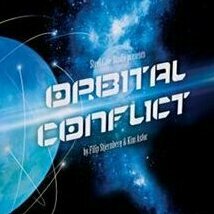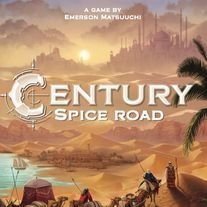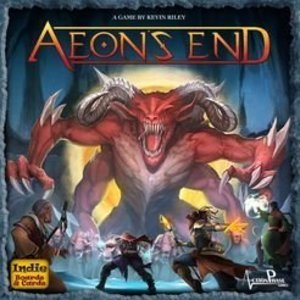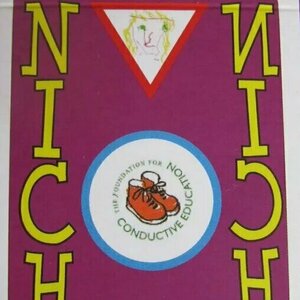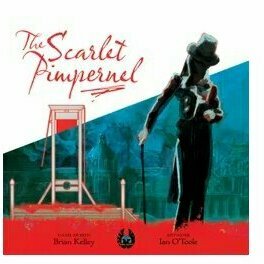
The Scarlet Pimpernel
Tabletop Game
The year is 1793. France cowers under the Reign of Terror, and not even the innocent are safe from...

Dingo's Dreams
Tabletop Game
Dingo and his friends have gotten lost on Walkabout! Visit their dreams to lead them home! ...
Purple Phoenix Games (2266 KP) rated Orbital Conflict in Tabletop Games
Sep 10, 2019
Orbital Conflict is a player versus player (PvP) card game in which the winner is the player showing the most VPs on their cards at game end. It is a game where placement of cards and orientation of cards is paramount in creating a space station that can dole out damage, take a ton of damage, or hybridizes offense and defense using resources granted from off-station investors.
DISCLAIMER: We were provided a copy of this game for the purposes of this review. These are final components, and the game is available from the publisher and other online retail stores. Also, I do not intend to explicitly cover every rule for the game, but to give an idea of game flow and play. -T
To setup the game (in this case a 1v1 head-to-head bout) shuffle all the cards with the white back together and deal each player a hand of five. Shuffle the smaller investor cards to form a draw pile. Give the starting player the Initiative card and you are ready to start!
The game follows a simple game flow following three phases per round: Draw, Main, Combat. During the Draw phase, the player with the Initiative card (I’ll call them the active player) will draw two cards from the white-backed deck (which I will just call cards). Then the other player will draw two cards as well. The active player then draws two investor cards for themselves and places them in front of their play area as possible investors to claim. The other player does the same. If there are any cards containing discard abilities that a player would like to play during the Draw phase, and the discard text reads they may do so during the Draw phase or any phase, they may play them and follow the discard instructions now.
Once done, the game moves on to the Main phase. During this phase the active player will play any cards they wish that are appropriate for this phase, and then the other player will do the same. During this phase players will be playing cards from hand (and as many as they would like) to add on to their space station, activate modules that were previously deactivated, claim investor cards, and prepare for the next game phase. Space stations can be added to via modules. Modules can be single cards, or multiple splayed cards. As you can see in the photo above cards have icons to the left of the white barrier and some will also have icons to the right. Depending on how a card is added to a module certain icons may be covered and therefore inactive. When adding a card to a module (called an extension) the player decides if they want to add the card to the right of the splay, thus covering up icons to the right of the barrier of the covered card, or under the stack to the left of the splay. Additionally, players may flip any card over to have the back showing, which will provide icons usable in a station module. There are restrictions for playing cards, but I will let you discover those on your own.
The game follows a simple game flow following three phases per round: Draw, Main, Combat. During the Draw phase, the player with the Initiative card (I’ll call them the active player) will draw two cards from the white-backed deck (which I will just call cards). Then the other player will draw two cards as well. The active player then draws two investor cards for themselves and places them in front of their play area as possible investors to claim. The other player does the same. If there are any cards containing discard abilities that a player would like to play during the Draw phase, and the discard text reads they may do so during the Draw phase or any phase, they may play them and follow the discard instructions now.
Once done, the game moves on to the Main phase. During this phase the active player will play any cards they wish that are appropriate for this phase, and then the other player will do the same. During this phase players will be playing cards from hand (and as many as they would like) to add on to their space station, activate modules that were previously deactivated, claim investor cards, and prepare for the next game phase. Space stations can be added to via modules. Modules can be single cards, or multiple splayed cards. As you can see in the photo above cards have icons to the left of the white barrier and some will also have icons to the right. Depending on how a card is added to a module certain icons may be covered and therefore inactive. When adding a card to a module (called an extension) the player decides if they want to add the card to the right of the splay, thus covering up icons to the right of the barrier of the covered card, or under the stack to the left of the splay. Additionally, players may flip any card over to have the back showing, which will provide icons usable in a station module. There are restrictions for playing cards, but I will let you discover those on your own.
The Marinated Meeple (1853 KP) rated Century: Spice Road in Tabletop Games
Mar 14, 2018

AlphaTots Alphabet
Education and Entertainment
App
“A” is for action in the fun app from Spinlight that uses 26 action verbs to help toddlers learn...
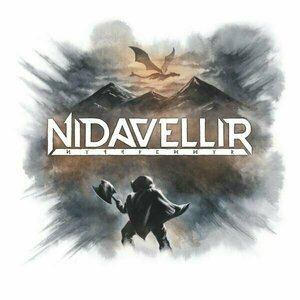
Nidavellir
Tabletop Game
Nidavellir, the Dwarf Kingdom, is threatened by the dragon Fafnir. As a venerable Elvaland, you have...
Matthew Krueger (10051 KP) rated Aeon's End in Tabletop Games
Feb 22, 2021
Aeon’s End is a cooperative deck building game in which you and your teammates are attempting to take down a member of The Nameless before it is able to destroy your home city of Gravehold. You do this by adding powerful spells, gems, and relics to your decks and strategically using them in a way that helps you defeat the enemies that come your way.
At the beginning of each game of Aeon’s End, you’ll set up your characters’ unique decks, put together a nemesis deck for the boss monster, and create a supply of cards that players can buy throughout the game. After all of that’s done, you’re ready to play!
Turn order is determined by the turn order deck. At the start of the game and after every turn, you’ll draw a card from this deck to see whose turn it is (the nemesis or a player).
On each turn, you can do one or more of the following actions in any order:
buy a card
play a card
charge up your special ability
focus or open a breach
prep a spell
react to a keyword on a nemesis card.
Aether is the currency in the game. You’ll use it to pay for new cards (spells, relics, and gems), to focus/open breaches, and to gain charges. You’ll start out with some basic cards that give you one aether apiece, but some of the cards you buy from the supply will give you more.
You cast spells in a unique way in this game. Open breaches allow you to prep a spell without paying a cost, while closed breaches need to be focused or opened in order to use them. When you focus a breach, you simply turn it clockwise and pay the “focus” cost written on the card. The spells you prepped can be cast on your next turn; prepped spells in closed breaches must be cast, while those in open breaches don’t have to be if you want to wait until a future turn.
Another unique aspect of this game is the way deck building works. Your deck is never shuffled, so you have to think about the order in which you put cards in your discard pile. When you cast spells or buy cards from the supply, those cards will go directly into your discard pile. When you use gems or relics, you’ll wait until the end of your turn and put them on top of your discard pile in any order. When your draw deck is empty, you simply flip your discard pile to create your new draw deck.
The main way to beat the nemesis is to take its life total down to zero, but you can also win if the nemesis’ deck runs out and there are no nemesis cards in play. You’ll lose if Gravehold is destroyed or if every player is exhausted (i.e. at zero life).
Its a excellent deck builder game. I highly recordmend playing it and owning it.

Hang Seng Personal Banking
Finance and Business
App
Bringing great features to meet your personal banking needs, our new Hang Seng Personal Banking...
